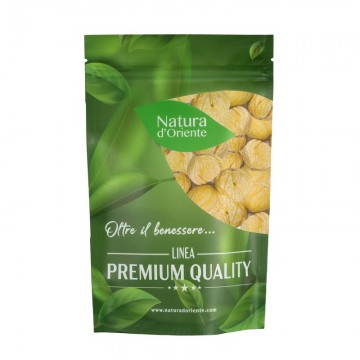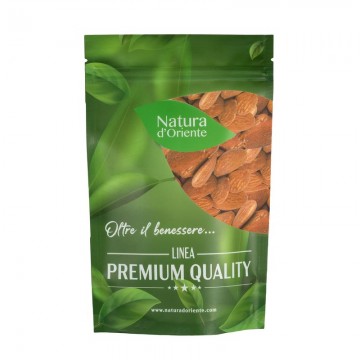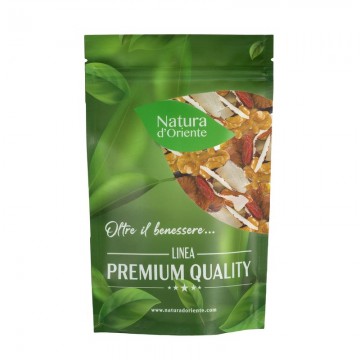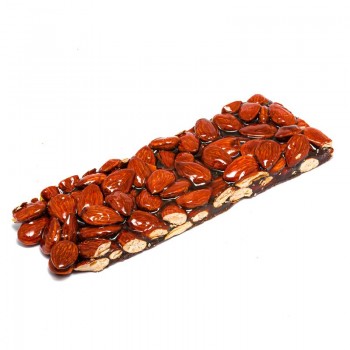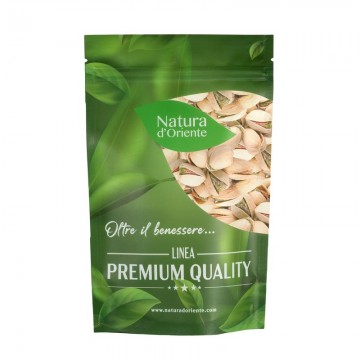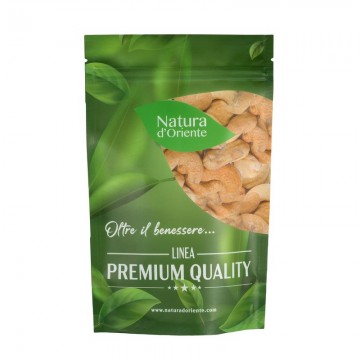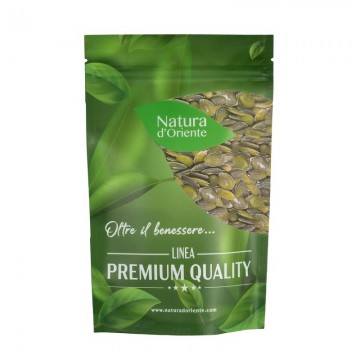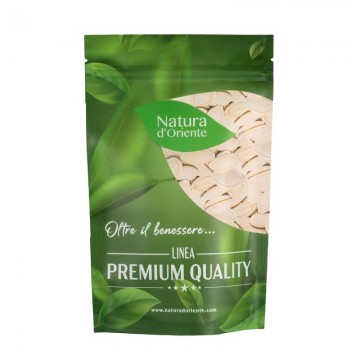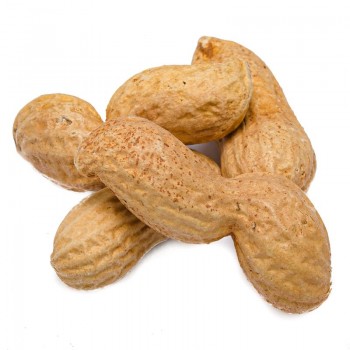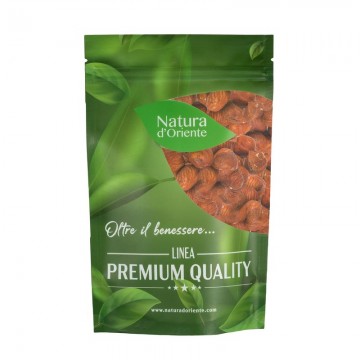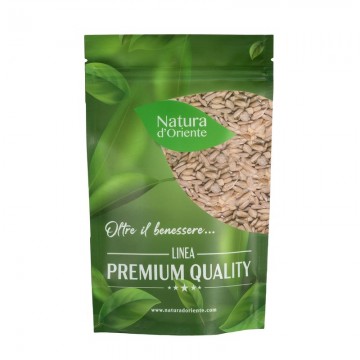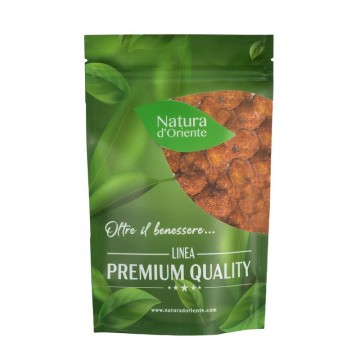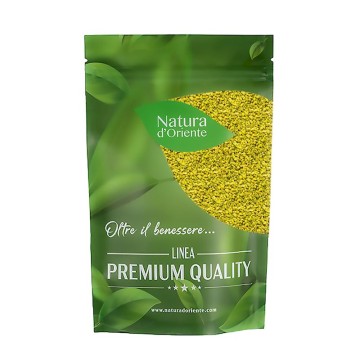The common nuts (available in various qualities among which the best known to us are the Californian and the Sorrentine) as well as all the so-called dried fruit are actually edible seeds.
Nuts properties and benefits
Like all dried fruit, nuts are very caloric and therefore should be consumed in small quantities. They are rich in polyunsaturated fatty acids and it seems that consumption can increase the good fats and antioxidants . The protein and vitamin content (especially thiamine) is also discreet, while the carbohydrate content is low.
Nutritional values of walnuts
One hundred grams of walnuts contain 654 kilocalories. As for the vitamins those of group B stand out, in particular the 0.34 mg of thiamine (B1) and 0.54 mg of B6 which represent respectively 30% and even 42% of the recommended daily ration. Among the most important mineral salts from a nutritional point of view, the content of magnesium (158 mg) and iron (2.9 mg) equal to 45% and 22% of the daily ration, but we also find manganese, phosphorus and zinc. / p>
History and cultivation
The Anglo-Saxons call the walnut "Persian nut", but this does not mean that the tree is actually native to that place. Certainly the current Iran is a center of origin but probably not the only one, being a very ancient and widespread cultivation it is not possible to identify with certainty a point of origin. Probably during the last ice age they survived in shelters in various parts of the world: Southern Europe, the Near East, China and the Himalayas. In the Western world it is thought that they followed the diffusion pattern already seen for other plants: Alexander the Great introduced them to the Greek world and later the Romans to Europe and Africa. In China they were imported from Central Asia about 2000 years ago. In the 17th century, British colonists introduced it to America.
Currently the first producer is China which with its 2.52 million tons in 2019 represented 56% of the world production of 4.5 million, in second place there are the USA, as mentioned above and as everyone knows, the variety produced in California is among the most widespread in the world. Other important producers are in the order Iran, Turkey and Mexico.
Walnuts in the diet
As mentioned given the calorie consumption we have to go slow. Despite having a good content of vitamins and mineral salts, there are other less caloric foods that can ensure these nutrients. Within a balanced diet, however, a few grams of walnuts per day can be an energetic and healthy snack that brings the benefits of the fiber and essential oils it contains. As well as those of proteins, in fact, walnuts are recommended for those who follow a vegan diet as a source of protein of plant origin. Walnut oil deserves a separate mention, which can be used in small doses raw, for example in salads or in pasta dressings. Rich in polyunsaturated fatty acids including omega-3s and omega-6s it is also believed to have antibacterial and antiviral properties. One hundred grams provides 900 calories, has a slightly bitter taste. It is important to remember that it should be consumed fresh from production because it turns rancid quickly, within three months of production and stored in dark bottles (this also applies to olive oil) away from sources of light and heat.
Plant and fruit
The scientific name of the walnut is Juglans regia, it belongs to the Juglandaceae family, genus Juglans. It is a large tree, 25-35 meters high and a trunk that can reach two meters in diameter. Due to its aesthetic properties and not excessive hardness which makes it easy to work, wood is widely used in the furniture industry. It is a plant that needs a lot of light and rich soil to grow well. It adapts to quite varied climatic conditions but its natural environment would be the hill, the largest wild walnut bush in the world is located in Kyrgyzstan, on the slopes of the Arslanbob mountain range and in the homonymous valley, at a height between 1000 and 2000 meters., The fruit of the walnut has green skin and is fleshy and fragrant, but not very thick and inedible, it contains the woody shell with a corrugated surface that we all know which in turn contains the edible seed dto the characteristic shape that resembles a human brain.
Shelled walnuts in the kitchen
Walnuts in the kitchen are used in a variety of sweet and savory recipes and in savory dishes, both in main courses, first courses and salads. Our choice fell on a delicious, easy-to-prepare salad. But before proceeding with the recipe, about the uses of walnuts in nutrition, we cannot fail to mention the nocino, a delicious liqueur obtained from walnuts.
SALAD WITH WALNUTS, FETA AND PEARS WITH HONEY
INGREDIENTS (for 2-4 people)
3 green gentle salad leaves (it's a variety of lettuce)
50 gr of leaf spinach
50 gr of rocket
50 gr of half walnut kernels
100 gr of feta cheese
2 pears
1 teaspoon of mustard
1 teaspoon of grain mustard
1 tablespoon of balsamic vinegar
extra virgin olive oil
1 tablespoon of honey
1 knob of butter
sale
pepe
Preparation
1) Wash and squeeze the salad and spinach leaves.
2) Place the rocket and spinach in a large bowl, not too deep.
3) Combine the two types of mustard, oil, vinegar, a pinch of salt and a pinch of pepper in a bowl.
4) Work the ingredients with a whisk until you get a creamy dressing (the dressing is a salad dressing).
5) Peel the pears and cut them into not too thin wedges.
6) Melt the butter in a pan with the honey and cook the pears over high heat, until they are soft, without flaking, and have reached a nice amber color.
7) Crumble the feta cheese with your hands and arrange it on the salad together with the chopped gentile salad leaves.
8) Distribute the chopped pears and walnuts and season with part of the mustard sauce.
9) Immediately serve the walnut, feta, pear and honey salad with the remaining sauce in a separate bowl.
Recipe source: Spoons.it
![]()

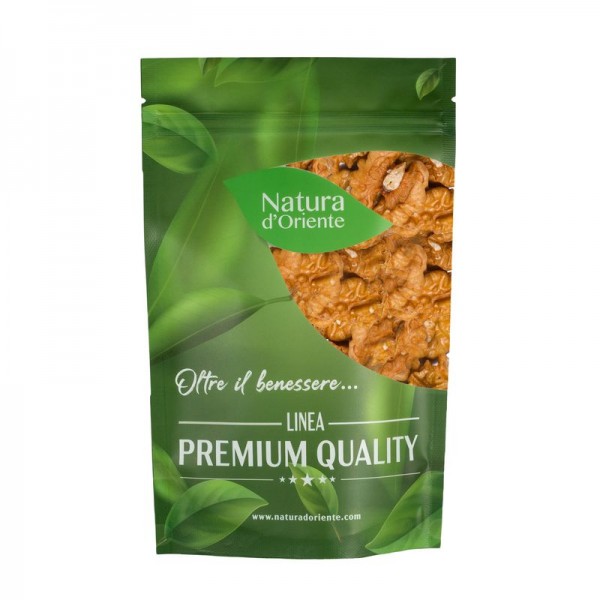







 No reward points for this product.
No reward points for this product.
